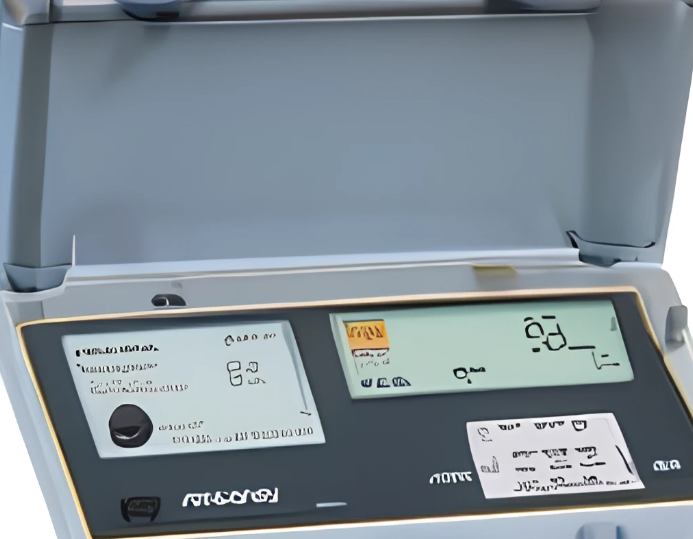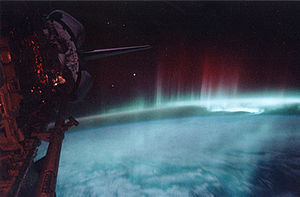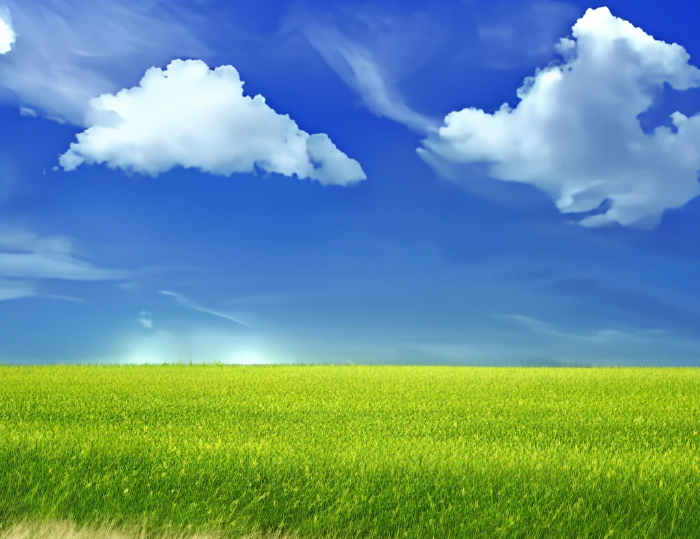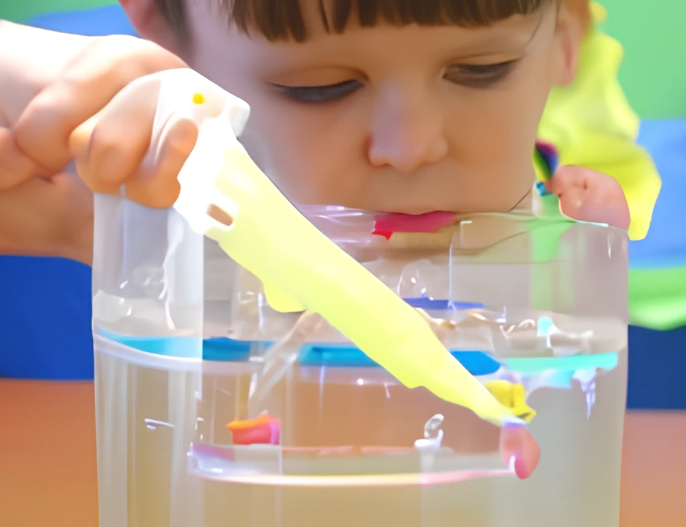- Air Homepage
- Sitemap
Navigate with the Ultimate Stuff in the Air Sitemap!
You can use this sitemap to navigate this complicated website. Especially if you want to learn more about weather and meteorology.
The Earth's climate systems and how they interact can be better understood if you take a meteorology and environmental science course. In addition, you'll learn how humans are impacting the climate and what we can do about it. You can use this list to explore, learn, and decide what to do.
Stroll thru the webpage to see what else we have in store! There's something for everyone to read and enjoy here, and you'll find it once you look around a bit.
Check out the categories below to see what interests you. I hope this site map helps you find what you're looking for.
Table of contents for the sections below:
Wonders of meteorology
Forecasting, tools, and technology
An Introduction to Meteorology
Weather and Geography
Environment and Air Quality
Fun Things to Do
Careers in weather
Environment: Data and Insights
Discover Meteorology - Exploring Nature's Weather Wonders
Curious about the sky and weather? Imagine diving into a collection of science and meteorology articles that explain thunderstorms, tornadoes, and even the mesmerizing Northern Lights. Learn how clouds form, why hurricanes spin, and how scientists predict the weather. We'll take you on a thrilling adventure through the realms of science, igniting your imagination and maybe inspiring you to become a meteorologist. Check the sitemap below to explore the fascinating world of meteorology!
Beautiful White Snow Imagery - Snow is a type of precipitation formed when water vapor freezes into ice crystals in the atmosphere. I love snowy landscapes and stunning imagery, especially when it covers trees, mountains, and other natural scenery.
Storm pictures worth seeing - Storms can be beautiful and dangerous, with lightning, thunder, high winds, and heavy rain or snow. From towering clouds to dramatic lightning strikes, storm pictures can capture the raw power and beauty of nature.
Convection, Storms and Cumulonimbus Clouds - Convection, thunderstorms, and cumulonimbus clouds: Convection is the transfer of heat through fluids (like air or water). Convection in the atmosphere can cause storms like thunderstorms and hurricanes. Large, towering clouds associated with thunderstorms are called cumulonimbus clouds.
Storm Formation - Getting a storm started: Storms can form in a variety of ways, but most involve moisture, instability in the atmosphere, and a trigger (like a cold front or pressure change). As a storm grows and evolves, it interacts with the environment around it.
Calm Weather and Inversions - Weather inversions, that is: A layer of warm air sits on top of a layer of cool air, trapping pollutants and causing poor air quality. As the warm air layer prevents air from rising and forming clouds, inversions can also lead to calm weather.
The Butterfly Effect and Random Weather Changes - The butterfly effect says that small changes in one system (like the flap of a butterfly's wings) can affect another system (like the weather). Changing weather patterns can be hard to predict, since even small changes in temperature, pressure, or moisture can have a big impact.
Drought and Aridity Index - Drought and Aridity Index: Droughts can be devastating to ecosystems, agriculture, and human populations. Aridity index measures how dry an area is based on factors like temperature, rainfall, and evapotranspiration.
Earth History - Ancient Climates - A History of Ancient Climates: Earth's climate has changed dramatically over time with periods of extreme warmth (like the dinosaur era) and extreme cold (like the last ice age). Understanding ancient climates can help us understand how the Earth's climate system works and how it might change in the future.
Chinook Winds - Chinook winds are warm, dry winds that can blow in mountainous regions. These are caused by air moving over mountains, which warms up and dries out the air. The Chinook winds can affect local weather patterns and cause flooding and rapid snowmelt.
Understanding Weather - Tools, Tech, and Forecasting
For those who want to understand the science and mechanics of forecasting and predicting the weather, weather technology is a great study. It can help prepare for extreme weather and protect people and property.
Weather Equipment - A variety of tools and instruments are used to measure different aspects of the weather, like temperature, pressure, humidity, wind speed and direction, and precipitation.
How Barometers Work - How Barometers Work: Barometers measure atmospheric pressure, which can indicate weather patterns. Variations in temperature and air density cause changes in air pressure.
Thermometers and Temperature - Thermometers measure temperature, which determines weather patterns. Temperature is measured differently by mercury thermometers and digital thermometers.
Measuring Wind Speed and Direction - Wind speed is measured with an anemometer, while wind direction is measured with a wind vane. Understanding weather patterns and predicting potential weather hazards require both.
Humidity Measurements - A hygrometer measures humidity, or how much moisture is in the air. Human comfort and health can be affected by humidity levels.
Measuring Rainfall - Rain gauges measure how much precipitation falls in a given area over time. Predicting floods and droughts, as well as understanding weather patterns, depends on this information.
Network of Weather Data - Weather data is collected from a variety of sources, like weather stations, satellites, and radar. The data is then compiled and analyzed to make weather forecasts and understand weather patterns.
Weather Satellites - Introduction - Satellites monitor and observe weather patterns from space. Information about storms, hurricanes, and other weather events is provided by them.
Weather Radar - Introduction - Radio waves are used by weather radar to detect precipitation and other weather patterns. You can track storms and other weather events in real time.
Doppler Radar - Doppler Radar: Doppler radar can detect the speed and direction of moving objects like raindrops and wind gusts. Meteorologists can use this information to predict storm paths and severity.
Radar Technical Problems - While radar is a powerful tool for observing weather patterns, it can also have technical problems, such as interference from other sources and data processing errors.
Air Pollution Assessment Model - Models for air pollution assessment are used to predict and monitor air pollution levels. Public health can be protected and air pollution can be reduced with this information.
Computers in Meteorology - Meteorology uses computers a lot to collect, process, and analyze weather data. Weather models and simulations are also used to predict the weather.
Creative Solutions for Global warming - Scientists and policymakers are exploring a lot of creative solutions to mitigate global warming, including carbon capture, renewable energy sources, and sustainable agriculture practices, as the Earth's climate keeps changing.
Essentials of Meteorology - Atmosphere, Weather, Climate
The study of the atmosphere, weather, and climate is called meteorology. It combines physics, chemistry, and math to explain how the atmosphere and climate work. Using meteorological theory, you can predict weather based on how these processes interact.
Introduction to Weather Maps - Weather maps are graphical representations of weather data that show current and future weather patterns. Temperature, pressure, and precipitation are all shown on them.
Upper Air Weather Maps - Upper air weather maps show what's going on in the upper levels of the atmosphere, like the jet stream.
Weather Map Symbols for Vorticity - Vorticity is a measure of how fast air rotates in the atmosphere. On weather maps, symbols show where vorticity is high or low, which can indicate potential weather hazards.
Longitude Latitude and Waves - Location on the Earth's surface is measured by longitude and latitude, and weather is determined by waves.
Jet Stream maps - The jet stream is a high-altitude wind pattern that affects weather. Maps show where the jet stream is and how strong it is.
Thermodynamics, Skew-t and Tephigram drawings - Skew-T, Tephigram, and Thermodynamics Drawings: Thermodynamics is the study of temperature, pressure, and other physical properties of the atmosphere. The skew-T and tephigram drawings are used in thermodynamics to analyze and visualize atmospheric conditions.
Water Vapor and Weather - Clouds and precipitation are influenced by water vapor, which can lead to weather patterns.
Warm Upper Layers in the Atmosphere - Weather patterns and atmospheric instability can be affected by warm upper layers in the atmosphere.
Radiosondes - Weather balloons carry radiosondes into the atmosphere to collect data about the weather.
Atmospheric Instability and Lapse Rates - Weather hazards such as thunderstorms and tornadoes can be caused by atmospheric instability, which causes warm air to rise and cool air to sink. Atmospheric stability is measured by lapse rates.
Cloud Formation - Clouds form when water vapor in the atmosphere condenses into tiny water droplets or ice crystals. Temperature and precipitation can be influenced by clouds.
Flash Flood Weather - There's a weather hazard called flash floods that can happen quickly and unexpectedly. Maps can help predict flash floods and give warnings.
Metric Conversion and Weather - Climate data is often measured in metric units, such as Celsius for temperature and millimeters for precipitation. Understanding and interpreting weather data requires metric conversion.
School Science Supplies for Students - Students can learn about weather patterns and how to collect and analyze weather data with science supplies like thermometers, barometers, and rain gauges.
The Air Layers Above our Heads - Air Layers: There are several layers in the atmosphere, each with its own properties and characteristics. Weather patterns and atmospheric phenomena can be predicted by understanding the different layers.
Elevation and Pressure - Weather patterns and weather hazards are affected by elevation and atmospheric pressure.
Weather and Math - Meteorology uses math to analyze and interpret weather data, create weather models, and make predictions about the future.
Simple Advection Forecasting - Advection forecasting: Advection is the movement of air or water in the atmosphere. In simple advection forecasting, you use current weather data to predict how weather patterns will move and change.
What is the Air Made of? - Nitrogen, oxygen, and carbon dioxide are all gases in the air. It's important to understand how human activities affect weather patterns and the composition of the atmosphere.
Dew Point Temperature - A dew point is the temperature at which air becomes saturated with water vapor, causing dew, fog, or clouds to form. For saturation to occur, air must be cooled to this temperature at constant pressure and water vapor content. Moisture in the air condenses out as dew, frost, or fog when the temperature drops below the dew point.
Density - A substance's density is its mass per unit volume. Temperature, pressure, and molecular weight affect gas density. A decrease in density occurs as gas molecules move faster and take up more space. As temperature decreases, gas molecules move slower and take up less space, increasing density. Increasing pressure compresses gas molecules, increasing density. Density also depends on molecular weight, as heavier molecules will take up more space.
Geography and Weather - Interrelated Forces
Geography and weather are closely related because they both influence each other. The weather can affect geography by eroding rocks and other landforms, and geography can affect weather by blocking air masses, which affects precipitation and temperature.
Weather in the USA - The weather in the USA varies a lot depending on the region and the time of year. Some places have hot summers and mild winters, while others have cold winters and warm summers. Because of the country's varied geography, we can get hurricanes along the Atlantic and Gulf coasts, tornadoes in the Midwest, and wildfires in the west.
National Weather Center for Storms - Located in Norman, Oklahoma, the National Weather Center for Storms studies severe weather, including tornadoes, thunderstorms, and hurricanes. The center is a collaboration between NOAA, the University of Oklahoma, and the Oklahoma state government.
Weather Underground Website - The Weather Underground website is a popular weather resource. Satellite imagery, radar maps, a sitemap and up-to-date weather forecasts are all available. It also has a community of weather enthusiasts who share their own observations.
Canadian Weather - Canada's weather can be pretty unpredictable, with temperatures ranging from freezing cold in the winter to scorching hot in the summer. Regional factors like ocean currents, mountain ranges, and prevailing winds can also affect Canadian weather.
How to get Canadian weather warnings - Canadian weather warnings are issued by Environment Canada, the federal government agency responsible for environmental policy and regulation. Through its website, social media accounts, and Alert Ready system, the agency issues alerts for severe weather events like thunderstorms, tornadoes, and blizzards. Use its sitemap for navigation.
Canadian National Environmental Regulations - The Canadian National Environmental Regulations are a set of federal regulations designed to protect the environment and human health. Regulations cover air quality, water quality, hazardous waste management, and wildlife and habitat conservation.
The Weather Network - Providing up-to-date weather forecasts, radar maps, and satellite imagery for locations across Canada, The Weather Network is a Canadian weather information provider. Also on its website, there are weather-related news and educational resources and a sitemap to help you find what you need.
Canada's Climate - The climate in Canada varies from region to region, with cold, snowy winters on the east coast and milder ones on the west. Arctic tundra, boreal forests, and grasslands all exist in Canada.
BBC Weather for England - For weather information in England and the United Kingdom, check out BBC Weather. You can get up-to-date forecasts, radar maps, and satellite imagery across the country.
Australian Bureau of Meteorology - Australia's weather agency is the Australian Bureau of Meteorology. Weather forecasts, warnings, and advice are provided to the public, as well as research into weather and climate.
Tropical Rainforests - Tropical Rainforests: Tropical rainforests are dense forests in the equatorial regions of the world that get lots of rain all year. In addition to being home to a variety of plant and animal species, these forests help regulate global climate by absorbing carbon dioxide.
Climate in China - China's climate varies a lot depending on the region and the season. From subtropical in the south to subarctic in the north, the country has a range of climates. During the summer, monsoon winds bring heavy rains to much of China. With China being the world's biggest emitter of greenhouse gases, climate change is also a big deal.
Air Quality and the Environment
From respiratory illnesses to cancer, poor air quality can cause health problems. Furthermore, air pollution can damage ecosystems and cause climate change.
Air Quality Testers - Professionals - Testing and monitoring air quality to determine the levels of pollutants in the air are done by Air Quality Testers - Professionals.
Air Quality Modelling - Predictions - Computer models are used to predict the dispersion of air pollutants and the resulting air quality.
Air Pollution - The presence of harmful substances in the air, such as gases, particulates, and biological molecules, which can harm humans and the environment.
Indoor Air Pollution - Pollutants inside buildings and other enclosed spaces can affect people's health.
Air Pollution Articles - Articles about air pollution: Information about causes, effects, and solutions.
Air Pollution from Vehicles - The release of pollutants from motor vehicles, like cars and trucks, that contribute to air pollution.
Air Pollution and Global Warming - Climate change is caused by the release of greenhouse gases and other pollutants into the air.
Water pollution - The contamination of water bodies, such as rivers, lakes, and oceans, with pollutants that harm aquatic life.
Global Warming Introduction - An explanation of how the Earth's temperature is rising due to greenhouse gases, some of which are from humans.
An Inconvenient Truth - The documentary film and book by Al Gore about the effects of global warming on the planet and how to stop it.
Global Warming Solution - Actions and strategies to reduce greenhouse gas emissions and mitigate global warming's impacts.
Definition of Climate Change - A change in the Earth's climate, including changes in temperature, precipitation patterns, and extreme weather.
Global Warming Pictures - Images showing how global warming is changing ecosystems, melting glaciers, and rising sea levels.
Rising Ocean Levels from Global Warming - Global warming's impact on the world's oceans, including rising sea levels due to melting polar ice caps and seawater thermal expansion.
Melting Glaciers and Global Warming - Melting Glaciers and Global Warming: Global warming melts glaciers and ice caps, which impacts water resources, sea level rise, and biodiversity.
Environment, Industry and Business - The relationship between business practices, industrial processes, and the natural environment, including impacts on climate, air and water quality, and ecosystems.
Go from this sitemap to my air quality business.
Sitemap of Engaging Weather Activities
By discovering and creating their own knowledge about the weather, students engage in exploratory learning. Students can learn about the different layers of the atmosphere, different types of cloud formations, and the effects of different weather on the environment through these activities.
How to make a barometer - It doesn't take a crystal ball to predict the weather - just make a barometer! With just a few household items and some basic science know-how, you'll be able to measure changes in atmospheric pressure and impress your friends with your forecasting skills.
Bill Nye, that old Science Guy - Bill Nye is a science superhero, with a lab coat for a cape and a brain full of knowledge. It's contagious that Bill Nye's passion for science is contagious and his enthusiasm for education is inspiring.
Science Fair Project Ideas - These science fair project ideas will geek you out! No matter what your favorite subject is, there's a project here that will help you learn something new.
Science songs - Science songs: Who says science can't be fun? You'll be tapping your feet and singing along while learning about the wonders of nature with these science songs.
Global warming cartoons - It's a serious issue, but that doesn't mean we can't have fun with it! By using humor to educate and engage, these global warming cartoons take a lighthearted approach to a heavy topic.
Meteorology for kids - Meteorology is the study of all things weather-related, from clouds to thunderstorms. Kids can learn about the science behind the weather and discover nature's power with these resources.
Archimedes' Buoyancy experiment - Get ready to get wet with Archimedes' buoyancy experiment! Archimedes' buoyancy experiment is a classic demonstration of buoyancy. Learn how objects float and sink with a few simple materials.
Ways to Prevent Air Pollution - Preventing Air Pollution: Air pollution is a major environmental problem that affects millions of people. We can all take simple steps to reduce our impact on the planet, like carpooling and using energy-efficient appliances.
Tornado chasing - Chasing tornadoes isn't for the faint of heart, but it's the ultimate adrenaline rush for those who love extreme weather. When you have the right gear and training, you can join a team of storm chasers and see how powerful these natural disasters can be.
Weather photography - Weather photography captures nature's beauty in stunning detail. These photos show the power of the weather and the awe-inspiring beauty of the natural world.
Weather word games - Play these weather word games to learn about the weather. These games will test your meteorology knowledge and keep you entertained for hours.
Sitemap of Weather Careers
In these careers, you'll study the environment and use science to forecast changes in the atmosphere. In addition to informing the public about severe weather, they help develop new technologies and methods to improve weather and air quality forecasting.
What is meteorology - A meteorologist studies the atmosphere and its processes, including weather patterns, climate trends, and atmospheric phenomena like storms, tornadoes, and hurricanes. Weather forecasting involves collecting and analyzing meteorological data, using computer models to simulate atmospheric conditions, and developing predictive models.
Environmental Health and Safety Jobs - Jobs in environmental health and safety: Environmental health and safety professionals are responsible for identifying and managing environmental hazards and ensuring worker safety. From entry-level jobs in environmental compliance to senior-level roles in risk management and occupational health and safety, EHS jobs are everywhere.
Meteorology Career - Weather forecasting, atmospheric research, climate modeling, and environmental consulting are all careers in meteorology. Developing forecasts and analyzing weather patterns requires observational data, computer models, and statistical analysis.
Environmental Certifications for Professionals - Professionals with Environmental Certifications: A certification in environmental science demonstrates knowledge and expertise in a particular field, like air quality, hazardous materials, or health and safety in the environment. All levels of education and experience can get certified, from entry-level certificates to advanced degrees.
Atmosphere Lesson Plans for Teachers - Atmosphere Lesson Plans for Teachers: Atmosphere lesson plans are educational resources for teaching students about weather patterns, climate change, and air quality. To engage students and encourage critical thinking, lesson plans can include hands-on activities, interactive multimedia resources, and educational games.
Air Traffic Control - The air traffic control (ATC) industry is responsible for ensuring the safe and efficient movement of aircraft in the airspace. To monitor aircraft, provide navigational guidance, and ensure safe distances between planes, ATC professionals use advanced radar and communications technology.
Become a Pilot - Become a pilot: Piloting is a challenging and rewarding career that requires technical skill, knowledge of aviation regulations, and a commitment to safety. To become licensed and certified to fly aircraft, pilots need a lot of training and experience, from commercial airline pilots to military aviators.
Stuff in the Air - Environmental Data and Insights
From weather conditions to air quality advice, StuffintheAir lets users access a variety of data sources. The data can be used to gain insights into the environment, watch human activities, and make informed decisions about reducing pollution and conserving resources.
Air News and Blog - Air news and blogs: Find out what's new in the aviation industry, including updates on airlines, airports, and manufacturers. You can use these sources for research on topics like aviation safety, aviation regulations, and aviation's impact on the environment.
Meteorology E-zine Articles - Meteorology e-zine articles: Meteorology e-zine articles cover weather forecasting, climate change, and atmospheric science. Research topics like weather patterns, atmospheric phenomena, and climate change can be found in these articles.
About us, Contact us - The "About us" and "Contact us" pages of a website give information about the organization behind the website, including its mission, history, and contact information. On these pages, you can learn about the organization's expertise and get in touch.
Meteorology and Psychology - On these pages, you can learn about the organization's expertise and get in touch. Meteorology and psychology are two fields that deal with the impact of the environment on human behavior and well-being.
Quick Links to this Website - It might be interesting to study how weather patterns affect mood and cognitive function, or how psychological factors like fear and anxiety affect weather responses. Links to This Website: Quick links to a site can give you quick access to specific pages or resources, like search, archives, or frequently asked questions.
Create your Online Business - You can use these links to quickly navigate the site. Set up an online business: Setting up an online business involves setting up a website, developing a marketing strategy, and building a presence online.The best practices for website design and optimization, online marketing tactics, and strategies for building an online brand might be explored in this research.
Privacy Policy - A privacy policy outlines how a site collects, uses, and protects your information. In this topic, research might explore the legal and ethical implications of online privacy policies, best practices for creating clear and effective policies, and the impact of privacy policies on consumer behavior.
Search the website - Users can find information quickly on specific topics or keywords by searching a website. Use this feature to research weather patterns, aviation regulations, or online business strategies.
Need to navigate your way around the Stuff in the Air website?
For your convenience, we have provided this sitemap.
Let me assist you in finding what you need on Stuff in the Air
Do you have concerns about air pollution in your area??
Perhaps modelling air pollution will provide the answers to your question.
That is what I do on a full-time basis. Find out if it is necessary for your project.
Have your Say...
on the StuffintheAir facebook page
Other topics listed in these guides:
The Stuff in the Air Site Map
And,
Thank you to my research and writing assistants, ChatGPT and WordTune, as well as Wombo and others for the images.
GPT-4, OpenAI's large-scale language generation model (and others provided by Google and Meta), helped generate this text. As soon as draft language is generated, the author reviews, edits, and revises it to their own liking and is responsible for the content.











New! Comments
Do you like what you see here? Please let us know in the box below.